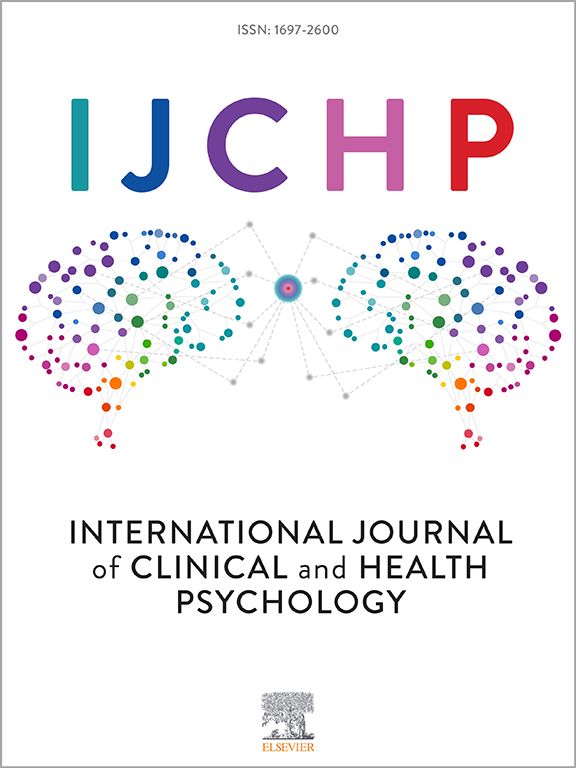两种触觉呼吸装置在减轻压力个体压力方面的有效性和用户偏好:一项混合方法研究
IF 4.4
1区 心理学
Q1 PSYCHOLOGY, CLINICAL
International Journal of Clinical and Health Psychology
Pub Date : 2025-07-01
DOI:10.1016/j.ijchp.2025.100603
引用次数: 0
摘要
不断上升的压力水平导致人们对压力管理工具的兴趣增加,尤其是触觉呼吸设备。尽管它们很受欢迎,但关于它们的生理和心理效果以及用户感知的证据有限。本研究评估了高压力个体对两种触觉呼吸装置的有效性和偏好。方法采用moonbird和Core两种呼吸装置对36名参与者进行研究。生理数据通过脑电图、心电图和呼吸带收集。用户偏好和自我报告的体验通过问卷进行评估。结果使用smoonbird会增加δ功率,降低α功率,而Core对脑电图功率无显著影响。心电图分析显示两种设备的平均心率无显著差异。两种装置在使用过程中都降低了心率变异性,但干预后没有观察到持久的影响。在两种设备的使用过程中,呼吸频率都有所下降,而moonbird在干预后表现出更持久的效果。两种设备在自我报告的放松和能量水平上没有显著差异,尽管moonbird在操作和呼吸指导方面总体上更受欢迎。结论这两种设备都显示出降低生理应激的能力,这表明在使用过程中某些神经生理指标得到改善,moonbird因其符合人体工程学的设计和触觉反馈而受到青睐。这些发现强调了用户体验在设备有效性中的重要性,强调了在设备设计中以用户为中心的方法的必要性。未来的研究应该探索这些设备的长期有效性、实际用户反馈以及与这些设备相关的生理和心理机制。本文章由计算机程序翻译,如有差异,请以英文原文为准。
The effectiveness and user preferences of two tactile breathing devices in reducing stress in stressed individuals: A mixed methods study
Background
Rising stress levels have led to increased interest in stress management tools, particularly tactile breathing devices. Despite their popularity, there is limited evidence on their physiological and psychological effectiveness and user perceptions. This study evaluates the effectiveness of and preferences toward two tactile breathing devices among highly stressed individuals.
Methods
The study involved 36 participants using two breathing devices, moonbird and Core. Physiological data were collected using EEG, ECG, and a breathing belt. User preferences and self-reported experiences were assessed via questionnaires.
Results
Moonbird usage was associated with increased delta power and decreased alpha power, while Core did not significantly modify EEG power. ECG analysis indicated no significant differences in mean heart rate between devices. Both devices reduced heart rate variability during use, but no lasting effects were observed post-intervention. Respiratory rates decreased during both devices’ use, with moonbird showing more sustained effects post-intervention. There were no significant differences in self-reported relaxation and energy levels between the devices, though moonbird was preferred overall for its handling and breathing guidance.
Conclusion
Both devices demonstrated the ability to lower physiological stress, as indicated by improvements in certain neurophysiological measures during use, with moonbird preferred for its ergonomic design and tactile feedback. These findings underscore the importance of user experience in device effectiveness, highlighting the need for a user-centric approach in device design. Future research should explore long-term effectiveness, real-world user feedback, and the physiological and psychological mechanisms associated with these devices.
求助全文
通过发布文献求助,成功后即可免费获取论文全文。
去求助
来源期刊

International Journal of Clinical and Health Psychology
PSYCHOLOGY, CLINICAL-
CiteScore
10.70
自引率
5.70%
发文量
38
审稿时长
33 days
期刊介绍:
The International Journal of Clinical and Health Psychology is dedicated to publishing manuscripts with a strong emphasis on both basic and applied research, encompassing experimental, clinical, and theoretical contributions that advance the fields of Clinical and Health Psychology. With a focus on four core domains—clinical psychology and psychotherapy, psychopathology, health psychology, and clinical neurosciences—the IJCHP seeks to provide a comprehensive platform for scholarly discourse and innovation. The journal accepts Original Articles (empirical studies) and Review Articles. Manuscripts submitted to IJCHP should be original and not previously published or under consideration elsewhere. All signing authors must unanimously agree on the submitted version of the manuscript. By submitting their work, authors agree to transfer their copyrights to the Journal for the duration of the editorial process.
 求助内容:
求助内容: 应助结果提醒方式:
应助结果提醒方式:


